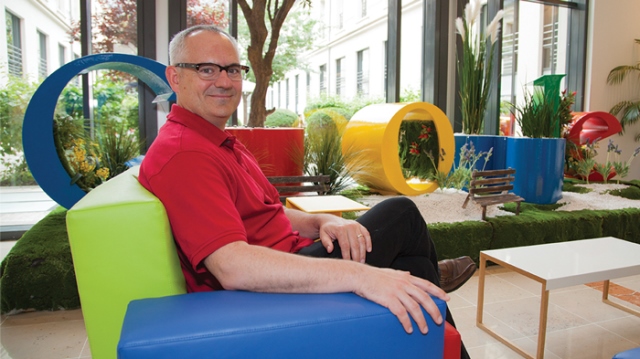Rediscovering the Past: Using Technology to Read Ancient Documents

Brent Seales courtesy photo
Follow us on Twitter:@BaylorUMedia
Contact: Terry Goodrich, (254) 710-3321
WACO, Texas (March 30, 2016) – Historians have long faced the problem of how to read ancient manuscripts and scrolls without damaging the fragile documents. Papers that could provide a wealth of information about past societies are sometimes too fragile to be unrolled, and documents damaged by smoke, ash or simply the passage of time are even more delicate.
In his lecture "Digital Unwrapping: Homer, Herculaneum, and the Scroll from Ein Gedi," Brent Seales, Ph.D., professor and chairman of the department of computer science and director of the Center for Visualization and Virtual Environments at the University of Kentucky, will discuss the emerging methods of imaging and analyzing these ancient objects.
The lecture will be held at 3:30 p.m. Thursday, March 31, in the Cox Lecture Hall of the Armstrong Browning Library.
"My lecture will give an easy-to-understand overview of how the technical approaches have been developed, illustrated with examples from familiar works such as Beowulf, the Iliad and the Bible," Seales said. "It will also tell the story of our discovery of writing within the Ein Gedi scroll, which was long thought to be too badly damaged for any physical analysis."
Seales, a visiting scientist at Google in Paris for the 2012-2013 academic year, runs a research program that centers around digital imaging and computer vision applied to problems in the digital restoration of antiquities, surgical technology and data visualization.
"I became an imaging specialist before the 'digital library' movement, but I found the specific problem of imaging damaged materials to be very interesting and challenging," Seales said. "The intersection of technology applied to the handling and study of antiquities has led to a number of innovative approaches."
Imaging methods that have transformed healthcare are now being applied to ancient objects in order to see inside them without causing more damage, Seales said. Other methods using different kinds of light such as spectral imaging or mapping the elemental composition of materials used to compose the objects – a technique called X-ray fluorescence – make up a new arsenal of very powerful imaging strategies that reveal new things about very old objects.
"The first step is to be able to capture an image of something that is not visible to the naked eye," Seales said. "X-rays and other imaging methods can reveal and enhance what is damaged or disappearing because of age. Software that carefully teases out what is captured in those images gives scholars a platform for analysis. In the case of writing, we build software to find layers where writing might be and then apply algorithms to flatten those layers for visualization."
The lecture is free and open to the public. Armstrong Browning Library is located at 710 Speight Ave., Waco, TX 76706.
by Jenna Press, student newswriter, (254) 710-6805
ABOUT BAYLOR UNIVERSITY
Baylor University is a private Christian University and a nationally ranked research institution. The University provides a vibrant campus community for more than 16,000 students by blending interdisciplinary research with an international reputation for educational excellence and a faculty commitment to teaching and scholarship. Chartered in 1845 by the Republic of Texas through the efforts of Baptist pioneers, Baylor is the oldest continually operating University in Texas. Located in Waco, Baylor welcomes students from all 50 states and more than 80 countries to study a broad range of degrees among its 12 nationally recognized academic divisions.